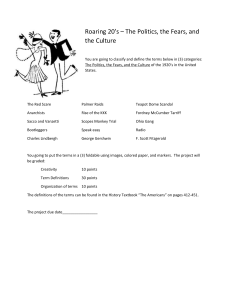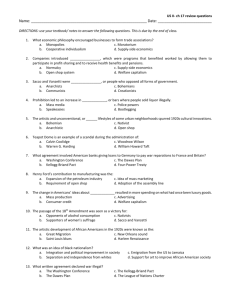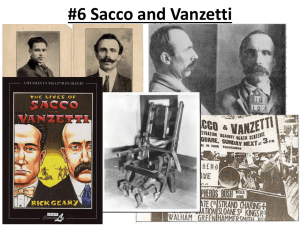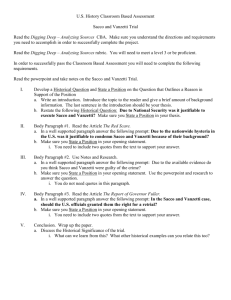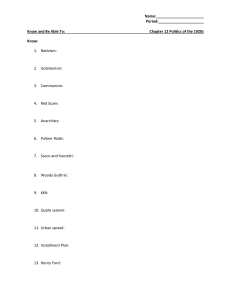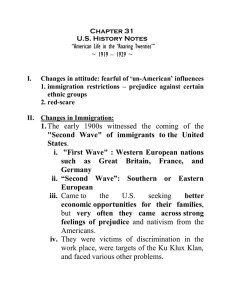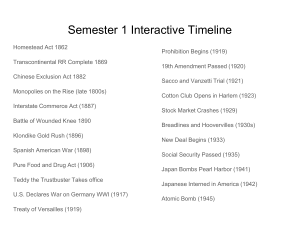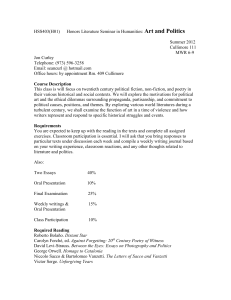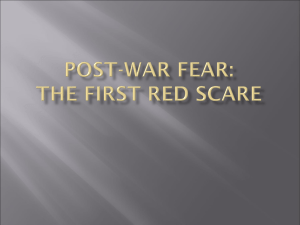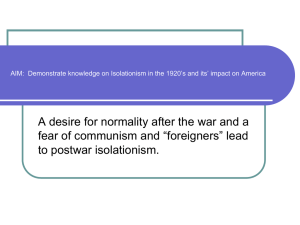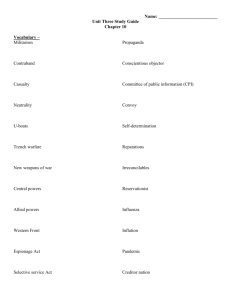Chapter 31 – topics to Consider American Life in the “Roaring
advertisement
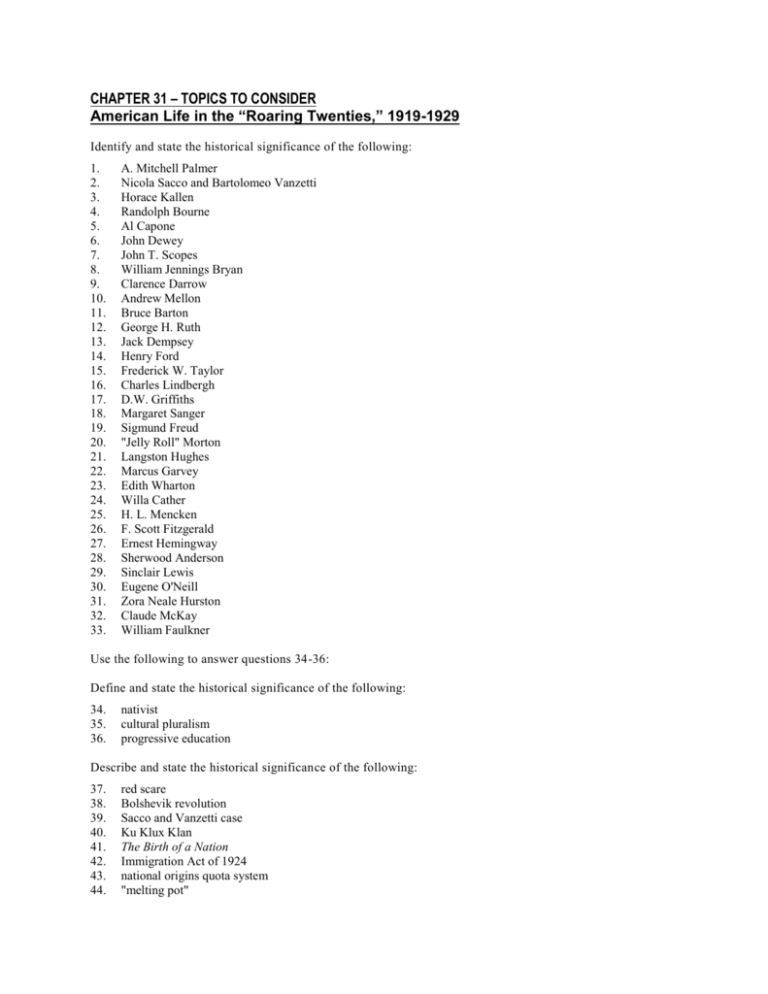
CHAPTER 31 – TOPICS TO CONSIDER American Life in the “Roaring Twenties,” 1919-1929 Identify and state the historical significance of the following: 1. 2. 3. 4. 5. 6. 7. 8. 9. 10. 11. 12. 13. 14. 15. 16. 17. 18. 19. 20. 21. 22. 23. 24. 25. 26. 27. 28. 29. 30. 31. 32. 33. A. Mitchell Palmer Nicola Sacco and Bartolomeo Vanzetti Horace Kallen Randolph Bourne Al Capone John Dewey John T. Scopes William Jennings Bryan Clarence Darrow Andrew Mellon Bruce Barton George H. Ruth Jack Dempsey Henry Ford Frederick W. Taylor Charles Lindbergh D.W. Griffiths Margaret Sanger Sigmund Freud "Jelly Roll" Morton Langston Hughes Marcus Garvey Edith Wharton Willa Cather H. L. Mencken F. Scott Fitzgerald Ernest Hemingway Sherwood Anderson Sinclair Lewis Eugene O'Neill Zora Neale Hurston Claude McKay William Faulkner Use the following to answer questions 34-36: Define and state the historical significance of the following: 34. 35. 36. nativist cultural pluralism progressive education Describe and state the historical significance of the following: 37. 38. 39. 40. 41. 42. 43. 44. red scare Bolshevik revolution Sacco and Vanzetti case Ku Klux Klan The Birth of a Nation Immigration Act of 1924 national origins quota system "melting pot" 45. 46. 47. 48. 49. 50. 51. 52. 53. 54. 55. 56. 57. 58. 59. 60. 61. 62. 63. 64. 65. cultural pluralism Volstead Act Lindbergh Law Fundamentalists Bible Belt The Man Nobody Knows Model T Fordism scientific management Amos 'n' Andy The Birth of a Nation The Jazz Singer Equal Rights Amendment Harlem Renaissance United Negro Improvement Association The Weary Blues The Sun Also Rises Winesburg, Ohio Babbitt The Sound and the Fury The Great Gatsby

